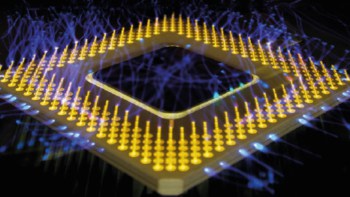Pentium computer chips have been used for parallel progressing before, but it's not a task they are well designed for. Now IBM has taken computer design one stage further and patented a new chip which can parallel process dozens of chips on the same silicon wafer. This new design could lead to supercomputer the size of a watch.
Many businesses are now using desktop computers linked together to replace their old mainframe systems. These machines divide up complex problems into smaller ‘chunks’ which are then fed to the desktop computers.
Larger parallel supercomputers – such as the Tera computer – cost millions and are used mostly for defence work. IBM believes with Patent 5717943 that it has developed a chip which could produce the same power (if not more) for a fraction of the cost.
The chip is called the Advanced Parallel Array Processor (APAP) and has a number of features which make it unique:
The low heat dispersion of APAP means that many chips can be built close together – even on the same silicon wafer – without the computer suffering any cooling problems.


